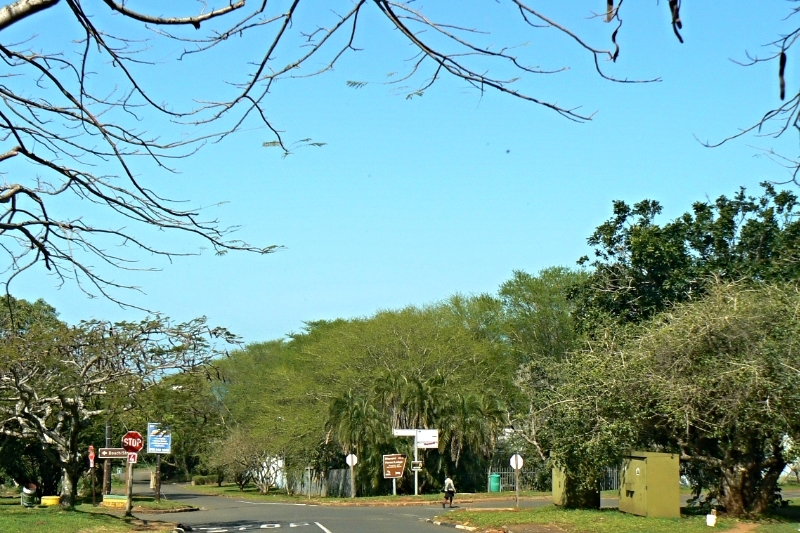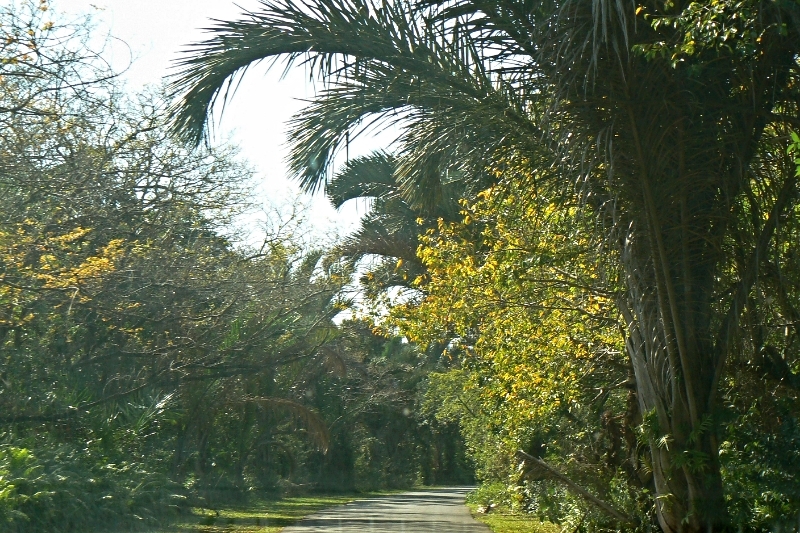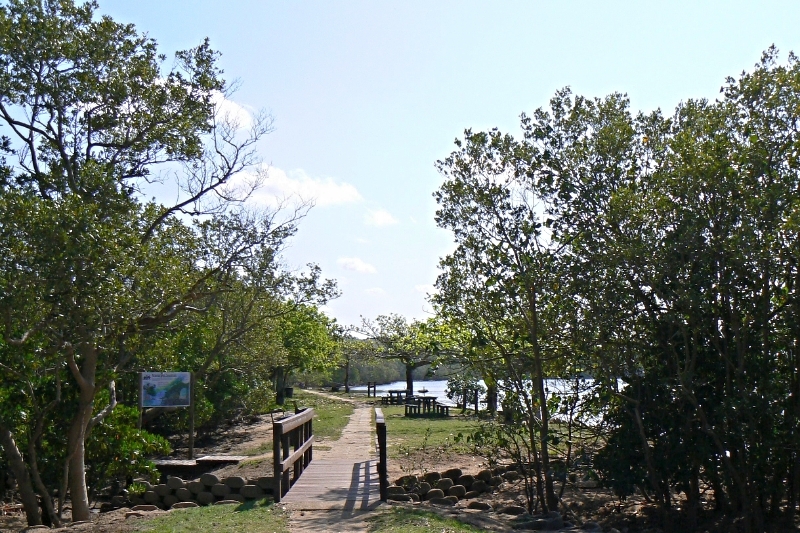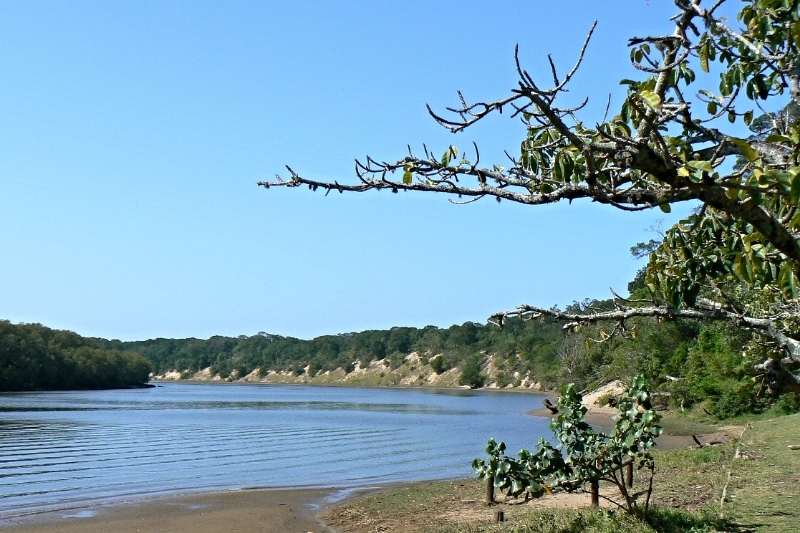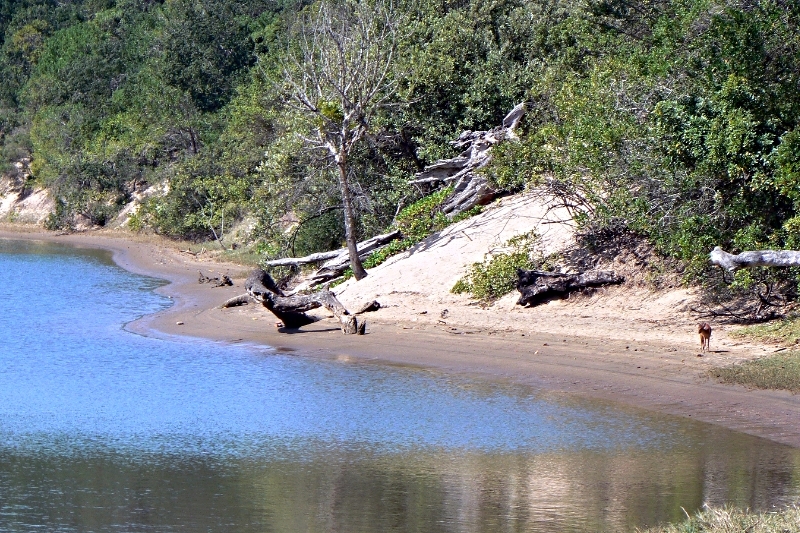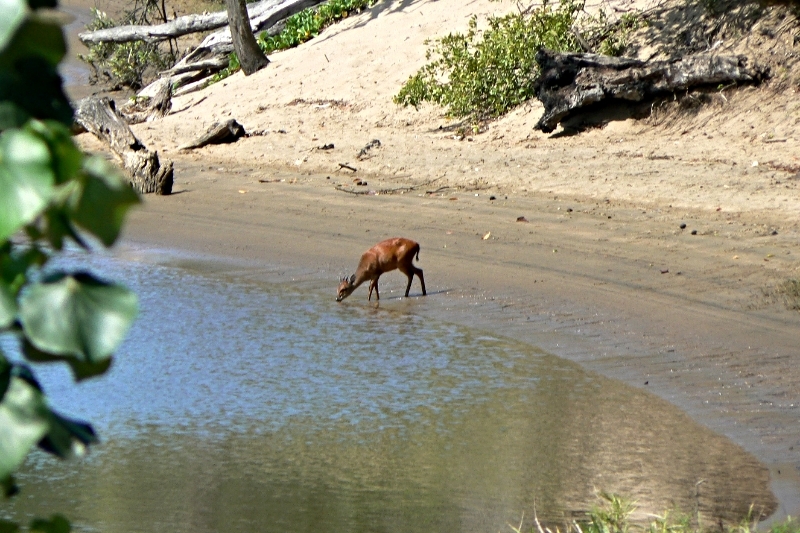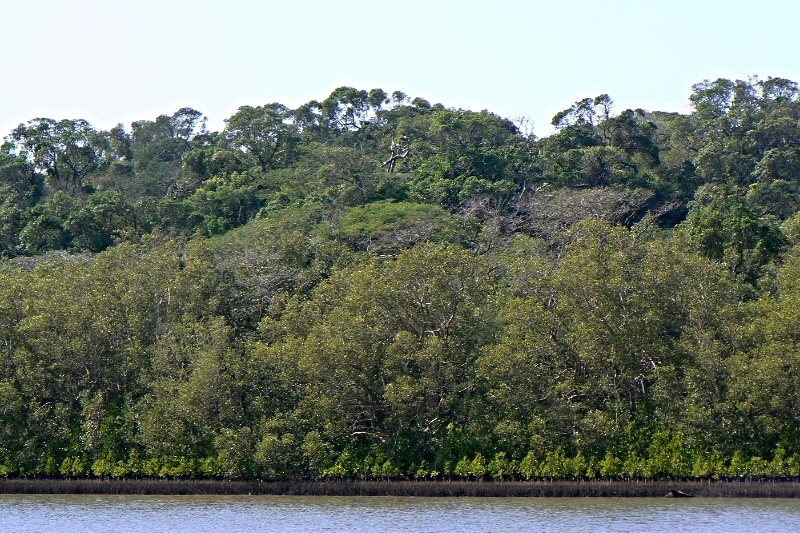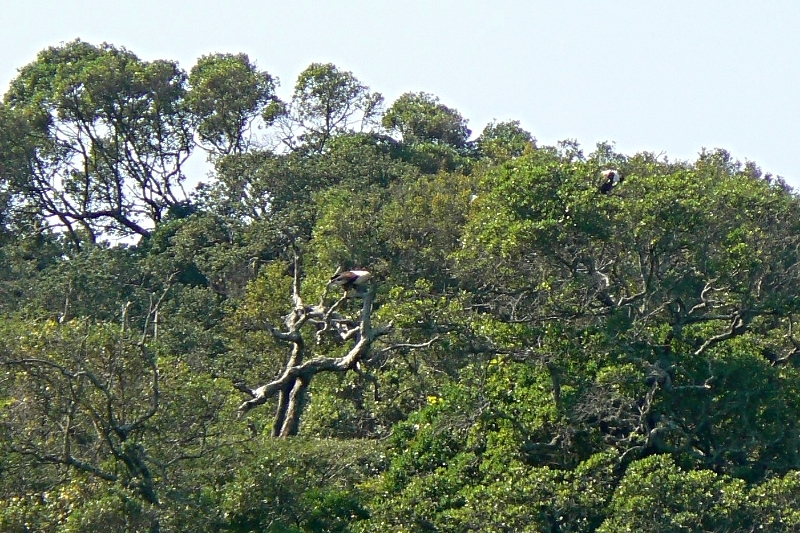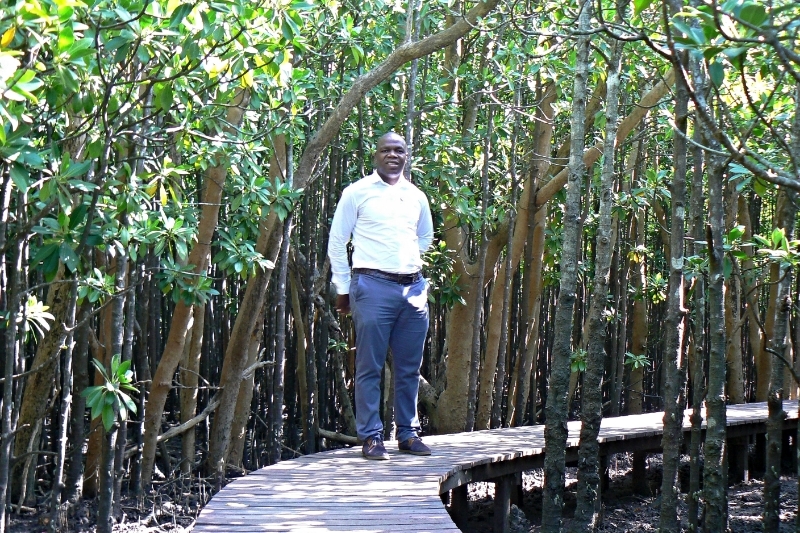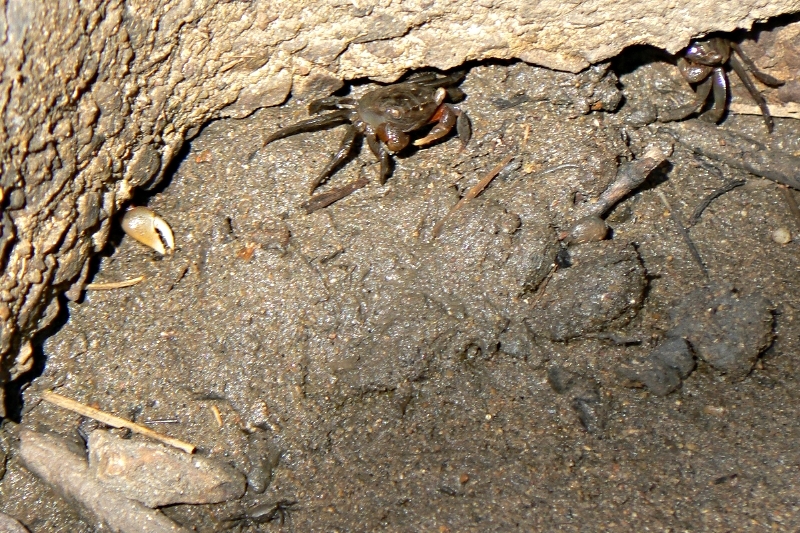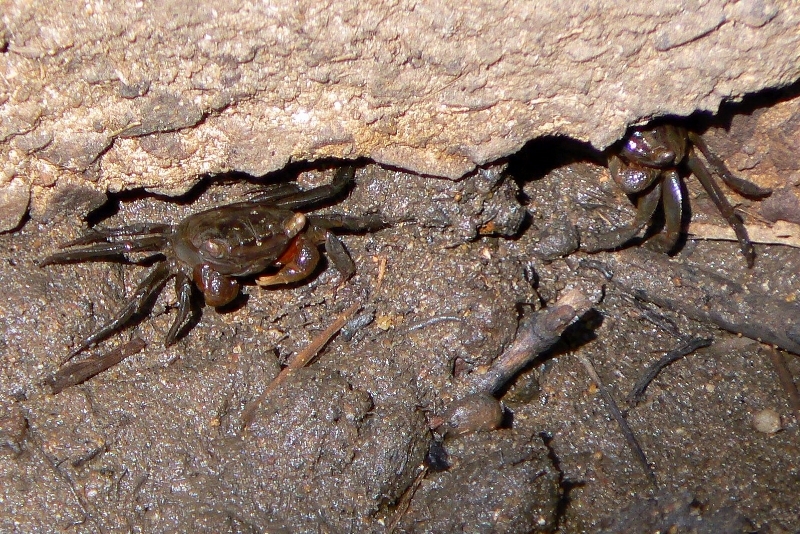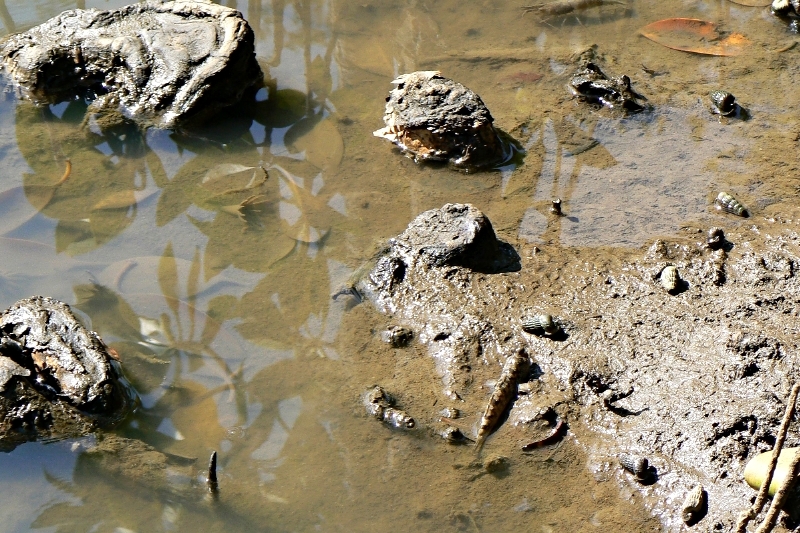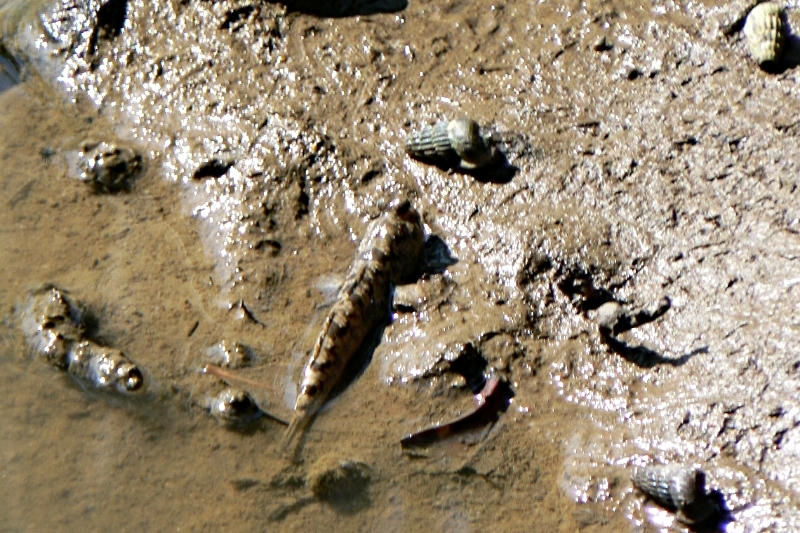This was not a day visit, but a one hour visit

and I haven't seen a monkey!
"Mangroves"
Mangroves are not a genetic entity, but an ecological one. Mangroves are defined as assemblages of salt tolerant trees and shrubs that grow in the intertidal regions of the tropical and subtropical coastlines. Mangrove forests in SA are species-poor and often monospecific, dense forests of mangroves (and fringing thickets of
Hibiscus tiliaceus and
Acrostichum aureum) in tidal zones of coastal lagoons and estuaries. A total number of 69 species in 27 genera, belonging to 20 families are considered as true mangrove species. In South Africa only 6 taxa of Mangrove species occur and the most widespread one on the coastline is the White (or Grey) Mangrove.
Mangrove species are variously adapted to cope with muddy conditions: Mangrove roots are in permanently waterlogged mud, but still need some air to survive. Different mangroves have evolved different structures to deal with this, such as the prop-roots of
Rhizophora or the pencil-roots (pneumatophores) of
Avicennia. The root system of the White Mangrove is well adapted to an estaury habitat: Horizontal cable roots radiate from the base of the plant tp provide anchorage in the mud. Out of these roots grow pencil roots ("pneumatophores") with lenticels on the surface for gas exchange (oxygen and carbon dioxide) with the athmosphere. They have breathing roots.
Mangroves have one of the most unique reproductive strategies in the plant world. Like most mammals, mangroves are viviparous (bringing forth live young), rather than producing dormant resting seeds like most flowering plants. Mangroves disperse propagules via water with varying degrees of vivipary or embryonic development while the propagule is attached to the parent tree.
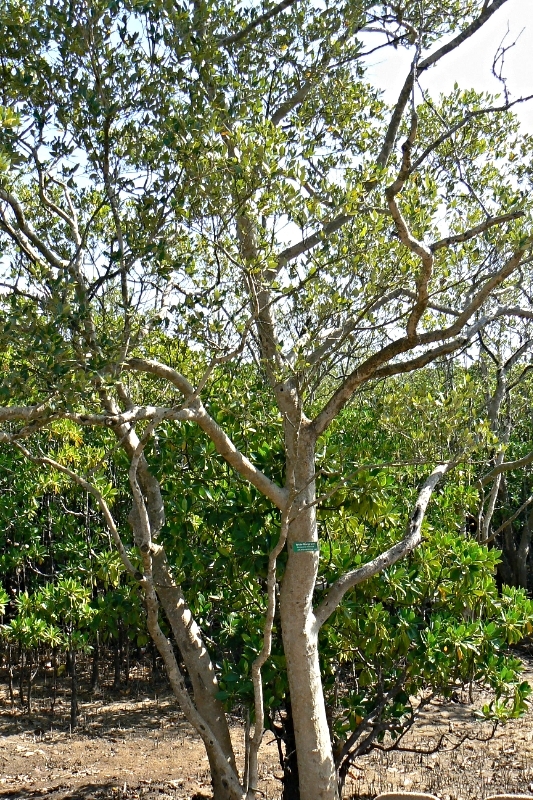 Avicennia marina
Avicennia marina, White mangrove
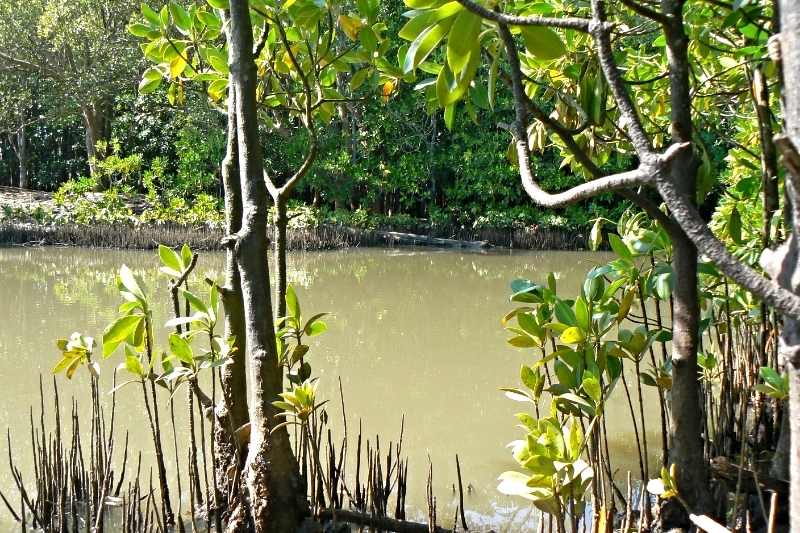
Pencil roots
There are also red and black mangrove, but I won't bore you with more greenery details. Anyway the Kosi Lake system has a larger diversity of Mangrove species than this little spot.
